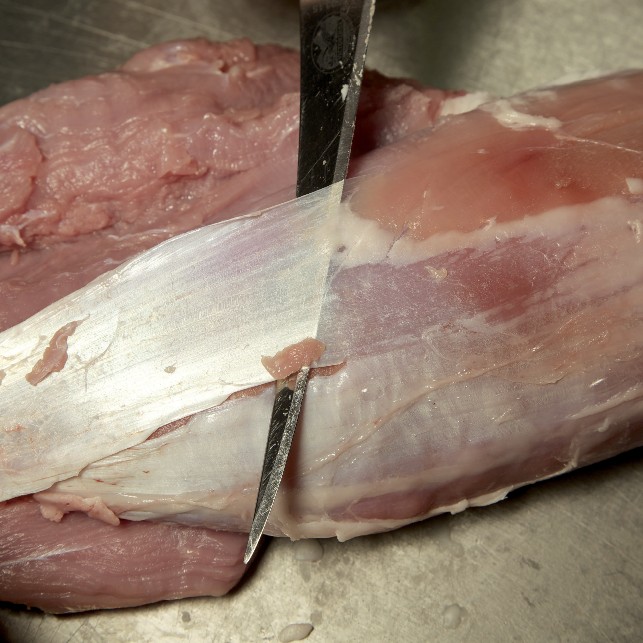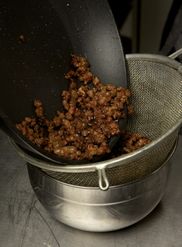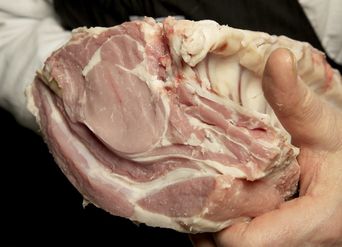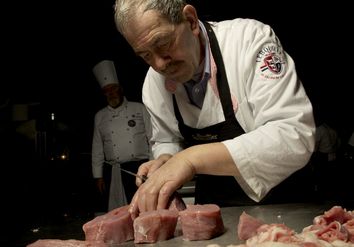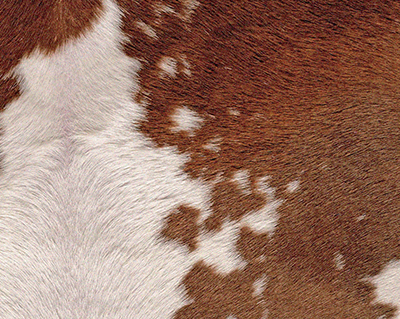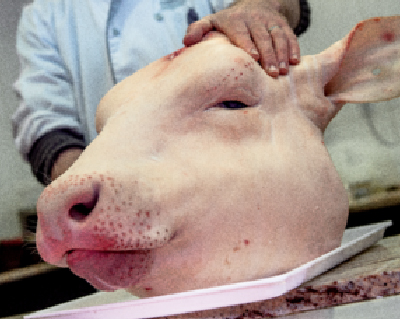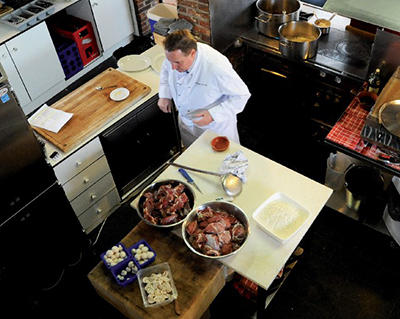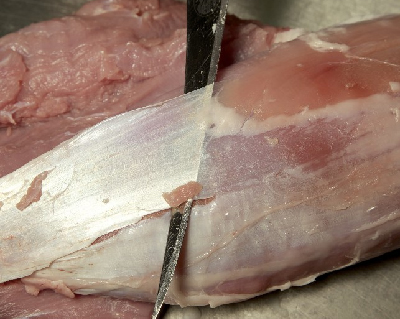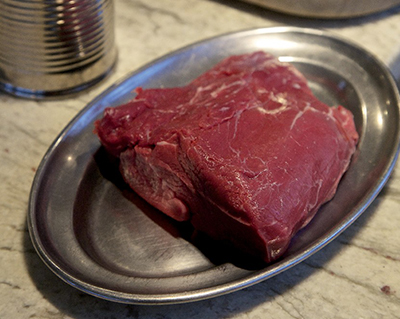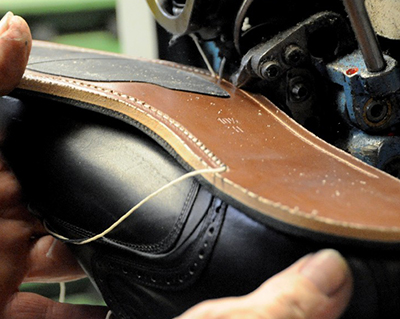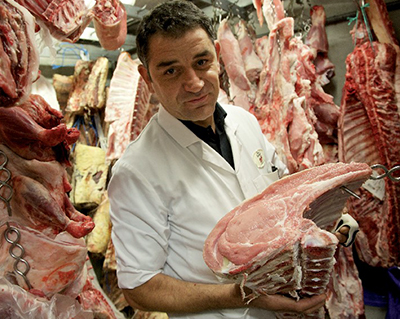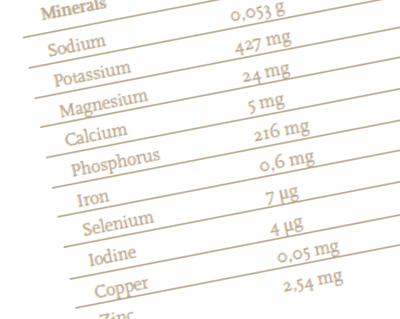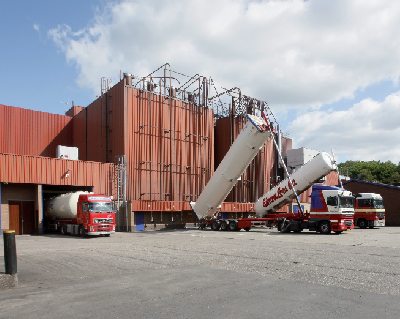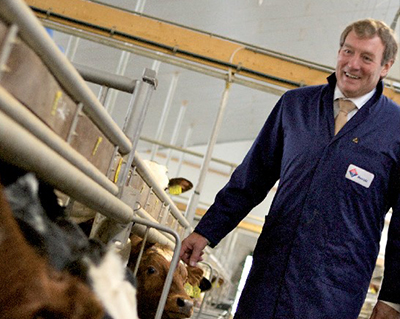Traditional butchers receive meat in quarters, or in primal cuts, and carry out any further preparation themselves. This is the same all over the world. How they are cut, however, is different. Every region of the world has its own way of doing it, and the driving factor is its use in the kitchen: its tenderness, its structure, its fat content.
The butcher’s main goal is to get an optimal total value from each animal: every gram of waste is a loss in profits. The question is, how do butchers and anyone else processing meat go about dealing with this? The answer, is square value. Each part of the animal and every single piece of meat has a separate value which is divided into prime and sub- prime cuts. The price difference even at this stage is significant. Generally speaking, the prime cuts are defined as luxury produce for three reasons: they are harder to come by, they take little additional preparation and on the whole, the meat is very tender.
Every carcass has just two of such fillets, which contribute little in weight, and are therefore more difficult to come by. It is a fact of economics that the price of a product goes up should demand be higher or availability reduced. The first ever postage stamp
is expensive because there is only one of them, not necessarily because it is the first one. If there were millions of them in existence, no one would show any interest whatsoever. It is all about the balance between supply and demand. Fashion trends and marketing can cause the demand for a product to rise, and if everyone wants shoes made of calf’s leather all of a sudden, the price of calf’s leather is bound to increase dramatically. This
is what happened with veal cheeks: a product that very few people were interested in, until a number of top chefs discovered how good they tasted, and the demand rocketed. Another example is the top blade steak. When slow cooking at low temperatures became fashionable in the world of gastronomy, the top blade steak was re-invented.
Similarly, the easier it the meat is to prepare in the kitchen or adapt for use in a meal, the more people are willing to pay and the tenderloin is a good example. The meat is incredibly tender and will still be edible irrespective of how long you leave it in the pan. It is also almost fat free. In short, all the risks of cooking with a tenderloin have been eradicated: piece of cake. The same applies if you order it in a restaurant. It is safe dish to choose, and there certainly won’t be any surprises hiding under the sauce…
Back to the cutting and the square value of each carcass. Every single gram of the carcass has value, and it is the butcher’s job to make every gram count. According to Ernest Lebouille, famous supplier to Dutch and Belgian restaurants, butchers need to be inventive.
He shows us how to cut the calf’s back into an 8-rib sirloin with the tenderloin on the bone. The first thing he does with this subprimal, is cut the T-bones, or veal loin chops and top sirloin cap. If the cap is taken off, then it is the perfect cut for a roulade. However, what often happens in this case, is that the tenderloin is removed from the subprimal sirloin. Ernest does this with surgical precision, skill and fervour. It looks as if he is gently stroking the meat, not cutting it! The meat that he pulls out is what he calls the “dirty tenderloin”, which he very carefully peels. He cuts off the smaller end and turns it into filets mignons. The rest of the fillet is made into 5 tournedos of 140g each and 6 mignons of 60g each. The small pieces of meat that are left are used for saté or kebabs. Everything is carefully stored and nothing goes to waste.
Ernest has the perfect solution for the leftover fat. He grinds it coarsely and suggests frying it in the pan to make delicious crunchy bits. The melted fat can be drained off and left to solidify. This creates a delicacy that restaurants can serve instead of butter: fat served with the crunchy bits. Food lovers revel in this particular delicacy, and now, every gram of the subprimal sirloin has found a purpose.
Going back to the subprimal sirloin from which the tenderloin has been removed, the butcher will always remove the nucha ligament (or paddywhack) first. This is a thick yellow tendon that runs along the back of the animal. Ernest removes the cap and reserves this for the roulade. He cuts off 4 ribs and de-bones the joint. That reveals 1200g of veal rib chop. The ribs used to be discarded but not anymore. They make beautiful spare ribs and will bring in plenty of profit. Now we are left with a rib of veal with 4 ribs. According to the butcher, this is the most versatile part that has endless possibilities. He de-bones the piece that reveals 9 vertebrae plus 4 ribs. The vertebrae are ideal for veal stock and the ribs can be served as spare ribs. Then he removes a small part that is harder than the rest and consequently needs more preparation and time in the kitchen. Next he removes the chain, which is the loose fatty meat which will be put aside for minced veal for the blanquette de veau. All of the membranes are carefully removed from the sirloin and can subsequently be used in different ways, like veal carpaccio or veal loin fillet. So far, not a single gram has been wasted. Each part of the animal has a purpose and its own intrinsic value. Our conclusion: a good butcher is a lot like a prospector digging for gold.
